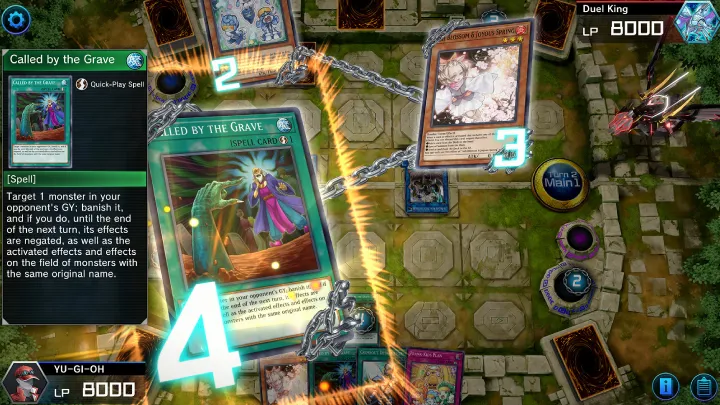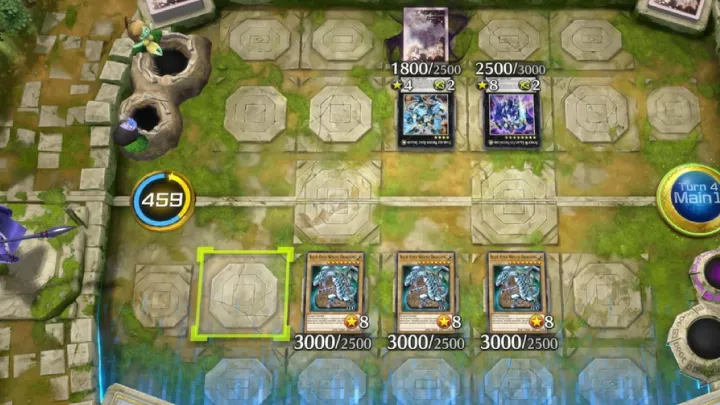Yu-Gi-Oh Master Duel has taken the world by storm as the premier digital platform for playing the classic Yu-Gi-Oh Trading Card Game. With stunning visuals, faithful rule implementation, and a vast card pool, it offers a challenging but rewarding experience for both new and returning duelists. This guide walks you through everything you need to know about mastering Master Duel, from the first login to competing at the highest levels. Whether you're a complete beginner or an aspiring meta player, this is your step-by-step how-to guide.
Getting Started with Yu-Gi-Oh Master Duel

Before entering your first duel, you’ll need to install the game on your preferred platform—PC, mobile, console, or all three. Master Duel supports cross-progression, meaning you can continue your progress on multiple devices.
Once you launch the game, it will prompt you to complete a short tutorial. This is highly recommended, as it teaches the fundamentals of summoning, spells, traps, and turn phases. Upon completing the tutorial, you’ll receive free gems and access to basic starter decks.
Choosing the Right Starter Deck
When you begin, you’re offered three starter decks: Power of the Dragon, Synchro of Unity, and Link Generation. Each one introduces a different summoning mechanic.
Power of the Dragon is ideal for beginners due to its simplicity. Synchro of Unity introduces Synchro Summoning and is good for those wanting to learn timing and combos. Link Generation offers fast-paced Link Summoning for experienced players. You can eventually unlock all three, so don’t stress over your initial choice.
Understanding the Core Mechanics
Yu-Gi-Oh is divided into six phases per turn: Draw, Standby, Main Phase 1, Battle Phase, Main Phase 2, and End Phase. The bulk of your decision-making happens during the Main Phases and Battle Phase.
Master Duel follows the same rules as the official card game. To succeed, you need to understand different summon types: Normal, Special, Fusion, Synchro, Xyz, Pendulum, and Link. Each has its own requirements and strengths. Knowing when and how to use each summon type can change the outcome of a duel.
Building Your First Competitive Deck
As you become more comfortable, you’ll want to build a personalized deck. Most decks are built around an archetype cards that share a name and work together. Popular beginner-friendly archetypes include Blue-Eyes, Tri-Brigade, Dragonmaid, and Sky Striker.
Aim to keep your deck at 40 cards to maximize consistency. A balanced beginner deck might have around 20 monsters, 10 spells, and 10 traps. Make use of “staple” cards like Ash Blossom & Joyous Spring, Maxx C, and Called by the Grave to interrupt opponents and defend your plays.
Earning Gems and Unlocking Cards
Gems are the main currency in Master Duel, used to buy packs and accessories. As a new player, you’ll get thousands of free gems through tutorials, solo mode, login bonuses, and missions.
Spend your gems wisely. Instead of pulling random packs, use your first Ultra Rare card pulls to unlock Secret Packs that align with your chosen archetype. Dismantle unwanted UR and SR cards to generate materials and craft the key cards for your deck.
Using the Crafting System
Crafting is one of Master Duel’s best features. You can dismantle any card (except limited-time event cards) and use the materials to create others.
Crafting Tips:
- Prioritize crafting core cards for your chosen deck.
- Don’t waste materials on cards you might replace later.
- Check your decklists often to avoid crafting duplicates.
Climbing the Ranked Ladder

Once your deck is ready, dive into Ranked mode. Ranked matches earn you rewards based on your performance each season. Wins help you move from Rookie all the way to Master Rank.
Play strategically. Focus on learning how different decks work and how to counter them. Watching replays of your losses can help you identify misplays and improve faster. Learning how to adapt mid-duel is what separates average players from great ones.
Mastering Chain Mechanics and Card Priority
As your dueling skills improve, you’ll encounter more complex card interactions. These are handled through a system of chains. When multiple effects activate at the same time, they go on a chain and resolve in reverse order—Last In, First Out.
Understanding this is critical when using hand traps or counter effects. For example, knowing when to chain Maxx C or Ash Blossom can be the difference between stopping a combo or getting overrun.
Tips to master chains:
- Set your response toggle to “On” during your opponent’s turn.
- Practice by watching replays where chains were used effectively.
- Learn which effects are “mandatory” versus “optional”.
Using Solo Mode to Practice and Earn Rewards
Solo Mode is not just for beginners. It teaches you how to play and also how different archetypes function. Each campaign offers lore and battles against AI decks. Completing these grants free cards, gems, and structure decks.
Use Solo Mode to test combos and become comfortable with your deck’s playstyle. The Duel Strategy missions also introduce you to more advanced mechanics like tributing, negating, and combo sequencing.
Participating in Events and Festivals
Master Duel frequently runs limited-time events like Fusion Festival, XYZ Festival, and more. These restrict certain summoning types or ban specific cards, encouraging creativity and variety in deck building.
Events are a great way to earn gems, titles, mates, and other exclusive items. Even if your deck isn’t perfectly optimized for the event, rental decks are often available, allowing anyone to join in the fun.
Managing Resources and Planning Deck Progression
It’s easy to get overwhelmed trying to build multiple decks. Focus on one or two archetypes and build them out completely before branching out. Use resources like MasterDuelMeta or YouTube to find competitive versions of the deck you want to play.
Plan your spending. Keep track of what cards you need, what Secret Packs they’re in, and whether they’re worth crafting. Dismantle unused high-rarity cards to free up materials for staples or meta picks.
Going Competitive and Understanding the Meta
When you’re ready to compete at a higher level, understanding the metagame becomes crucial. The meta constantly shifts, so stay updated with tier lists and tournament results.
Build your decks not just to execute your combo, but also to interrupt the opponent’s. Include counters for popular decks like Kashtira, Runick, Labrynth, or Branded. Decks that can consistently disrupt or adapt tend to perform well in high ranks and tournaments.
Top-tier cards worth crafting:
- Ash Blossom & Joyous Spring
- Maxx C
- Infinite Impermanence
- Lightning Storm
- Called by the Grave
Conclusion
Yu-Gi-Oh Master Duel is a rewarding and in-depth experience for card game lovers. With constant updates, events, and community engagement, there’s always something new to learn. Whether you're playing casually, climbing the ranked ladder, or aiming to compete in online tournaments, following a step-by-step progression from learning the basics to mastering advanced strategies is key to success.
Master Duel isn’t just about strong cards it’s about smart plays, resource management, and staying adaptable. Use this guide as your blueprint and start dueling like a pro today.
Summary
Master Yu-Gi-Oh Master Duel step-by-step from beginner to pro with tips on decks, strategy, ranked, gems, and competitive play.

















